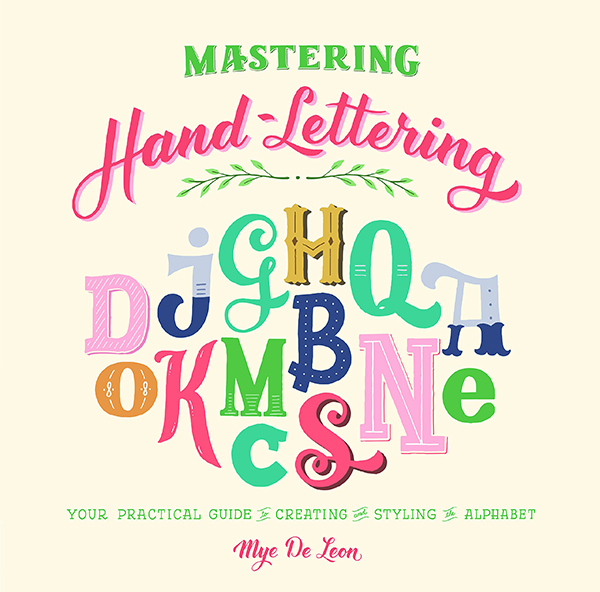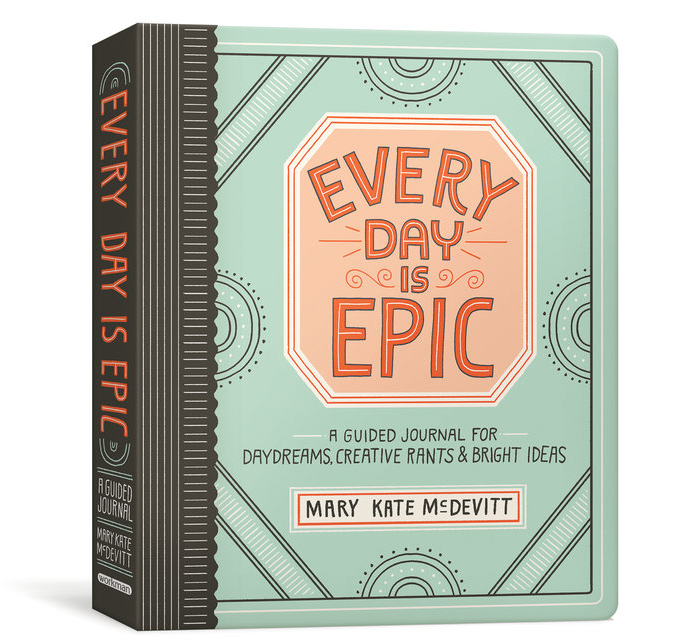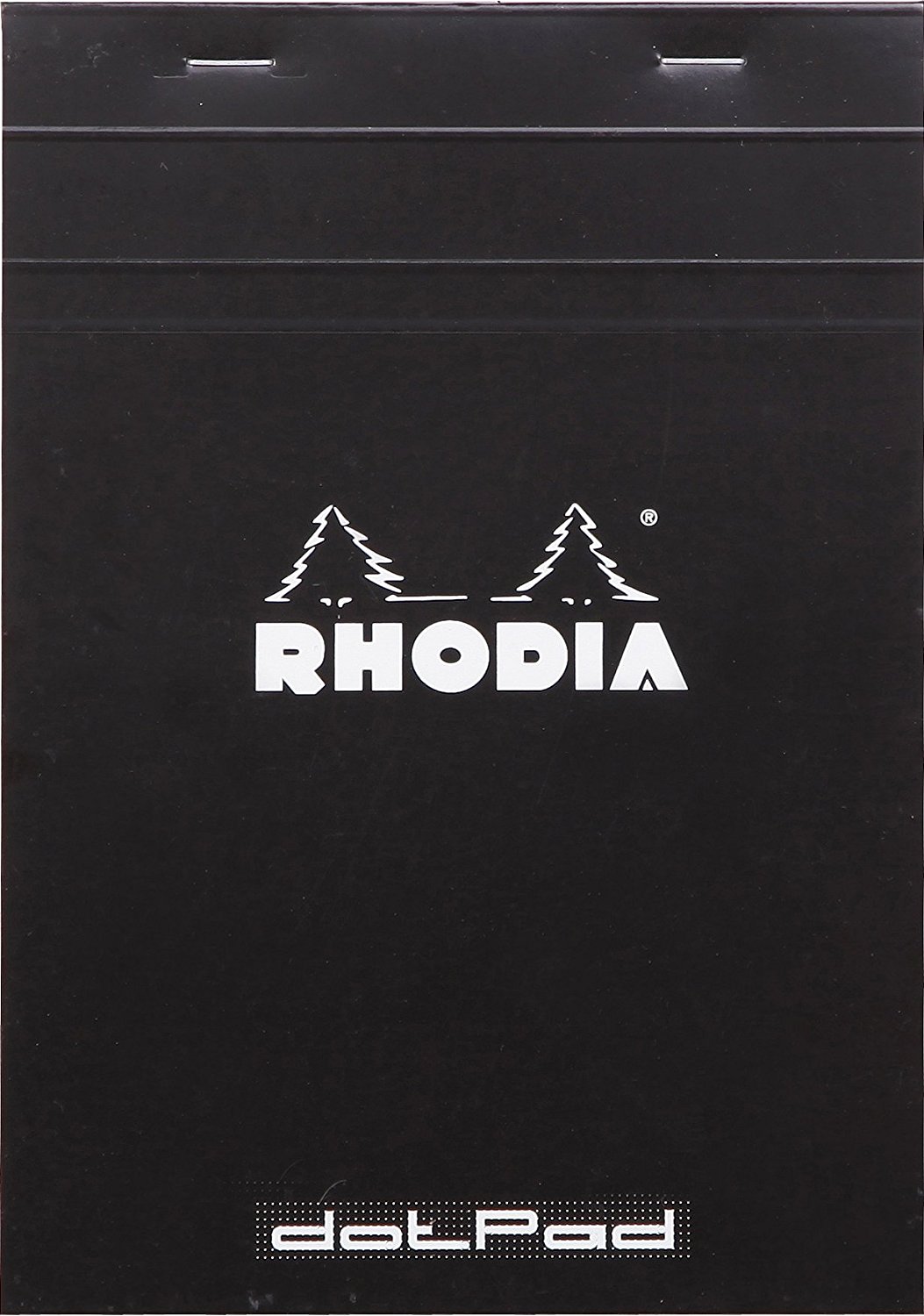
Hand lettering by Becca Coutrice of The Happy Ever Crafter.
Photo courtesy of Becca Coutrice
Editor’s note: Craft Industry Alliance is an Amazon affiliate. Amazon links in this post are affiliate links which means that we will earn a small percentage from items you purchase through these links at no additional cost to you. Thank you for your support.
I’ve long been fascinated by the idea of creating art with words. When I first started designing hand embroidery patterns, words were the first thing I used as my muse—mixing font styles to bring life to a quote or phrase. Peggy Dean, from her book The Ultimate Brush Lettering Guide, sums it up perfectly:
“Lettering creates readable art that comes to life, displaying a quirky, whimsical nature.”
Hand lettering often evokes the idea of calligraphy or typography, but lettering artists will quickly explain the distinction between the three different art forms. Calligraphy is about writing letters with some sort of dip pen with a nib and ink to create think/thin lines, and uses a single pass with the pen. Typography focuses on setting type. When you look at a typographic style, no matter the layout, the letters always stay the same. Hand lettering, which is often called “faux calligraphy,” focuses on drawing letters. Lettering builds on the same principals of both calligraphy and typography, but there is a building up of the letters with multiple passes and the tools can be as simple as a Sharpie or as detailed as a set of brush pens of varying widths.
Many people take up hand lettering as a way to de-stress, but figuring out where to start can be an overwhelming task. Type the words “learn hand lettering” into Google and immediately you are faced with an abundance of websites, Instagram accounts, and books to shuffle through.
The tools may be simple to procure, but where to start? Here are a few helpful resources to get you started:



Mastering Hand Lettering, by Mye De Leon focuses more on drawing instruction for both uppercase and lowercase letters. Different lettering styles are included as well as an explanation of her process. Reviews mention that De Leon’s book is filled with down-to-earth explanations that are simple for beginners.
Another book that explains basic hand lettering, and is a bestseller on Amazon, is Lettering and Modern Calligraphy: A Beginner’s Guide: Learn Hand Lettering and Brush Lettering by Paper Peony Press. The book includes step-by-step instructions for many lettering styles along with sample projects.
In addition to lettering workbooks, many hand letterers offer video instruction and other challenges via their websites. Veronica Zubek’s love of art began at a very early age and led to an art and design degree and subsequently work in logos and website design. But it wasn’t until she discovered hand lettering that she narrowed down her art form. Juggling her business and her two small children, she enjoys creating alongside (and sometimes collaborating with) her kids, and working with bright colors, letters, and abstract art. Creating is a natural overflow of her everyday life and keeping art supplies out and accessible is one way that she keeps the creative juices flowing amidst a busy life. She suggests tucking a sketchbook into your bag to have at the ready no matter where you are—you never know when inspiration might strike! Her Facebook group has over 3,000 members and she offers half a dozen challenges and courses on her website, TwoEasels, ranging from Lettering 101 to how to digitize your hand lettering in Illustrator. She also has a whole series of helpful hand lettering worksheets as freebies on her website.

Hand lettering practice pages from Becca Coutrice.
Photo by Ali Batoul Creatives
Searching through popular hashtags on Instagram can give you an abundance of hand lettering styles, designers, tips, and tricks. Some popular hashtags to follow are #moderncalligraphy, #penandink, #handlettering, #learnlettering and #handmadefont. Many lettering artists have their own hashtags for different challenges they offer.
The continued draw of hand lettering seems to be its simplicity. Grab a sketchbook and a few pens and you are on your way. What I love most about hand lettering is with just a small amount of guidance on the basics, you can easily develop your own style.


Aimee Davis
contributor
Aimee comes from a long line of women makers. She sleeps under quilts that her grandmother made, her head rests on pillowcases that her aunt embroidered, and her memories are full of time spent watching her mom and grandmother create. The majority of her sewing and embroidery skills are self-taught, and she’d like to think there is a little bit of genetic love seeping through.


I love to use words and phrases on my wall quilts. At quilt shows I am often asked how to appliqué the words onto the quilt top. So I have made a short tutorial, Word Appliqué the Easy Way, which is available on my website under tutorials. If interested, check it out here. https://www.prestoavenuedesigns.com/word-applique-the-easy-way/
I also use a lot of lettering on my fiber art and have a tutorial for an easy no reverse fusible applique method for adding text to them: https://suebleiweiss.blog/2017/03/19/no-reverse-work-forward-applique/